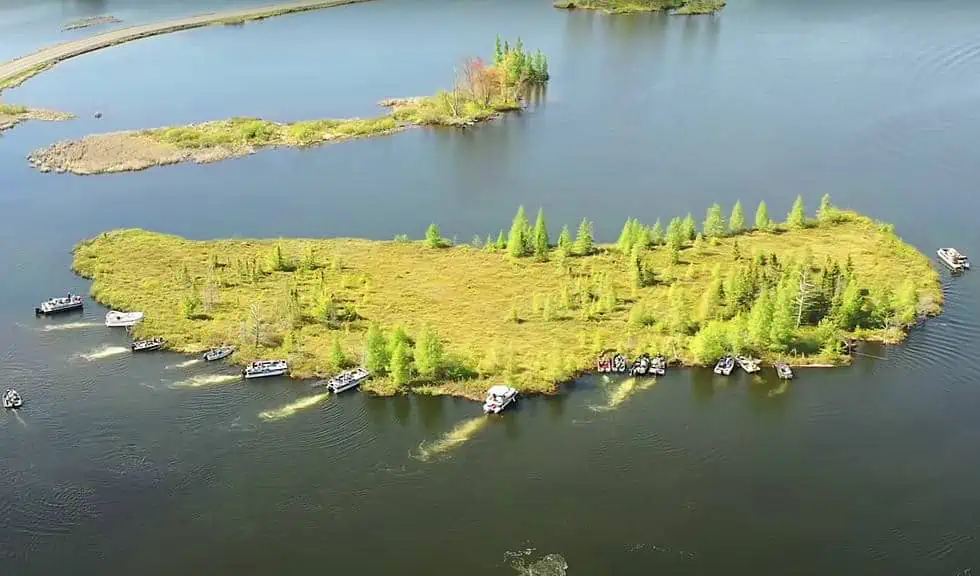
The Massive Floating Island of Lake Chippewa Requires Annual Coordination by Boats for Adjustment
Wisconsin’s Lake Chippewa is home to a large floating island that can shift position, occasionally obstructing a crucial bridge and necessitating relocation by local boat owners working together.
Lake Chippewa, also known as the Chippewa Flowage, was formed in 1923 by flooding a vast swamp. Following this, numerous peat bogs emerged and became fertile grounds for plant seeds dispersed by wind and wildlife. Over time, various plant species from grasses to trees began to grow, with their roots causing these floating bogs to expand. Presently, these floating islands range from the size of a parking space to several acres, with the largest, the “Forty Acre Bog” on the lake’s west side, featuring mature trees. Almost annually, dozens of local boat owners unite to push it away from a bridge connecting the lake’s East and West sides.
“It’s almost every year. It takes a community effort, and you have to have the winds at your back in order to push them in,” shared a local resident with Northern News Now. According to the Chippewa Flowage website, the lake’s unique floating islands originate as mud flats rising from the swamp bottom, but over time, vegetation starts growing. The oldest islands even have trees that act as sails when the wind blows, moving the entire floating mass around the lake.
“It’s one of the first things you look for when you come in here in the morning: Where’s the bog?” mentioned local resident Denny Reyes. The decades-old floating island doesn’t move constantly, but when it does, it can create issues for locals by blocking a significant bridge, the sole passage between the lake’s East and West sides. In such instances, boats are the only means to relocate it. It requires not just one large boat but dozens working together with favorable wind conditions. Last year, 25 boats were utilized to push the floating island away from the bridge.
“When we move it, we gotta get it kind of in the right spot, or it can be back in in a couple of days,” noted local homeowner Greg Kopke. As floating islands like the Forty Acre Bog serve as habitats for various animal species, they are legally protected and cannot be dismantled.






